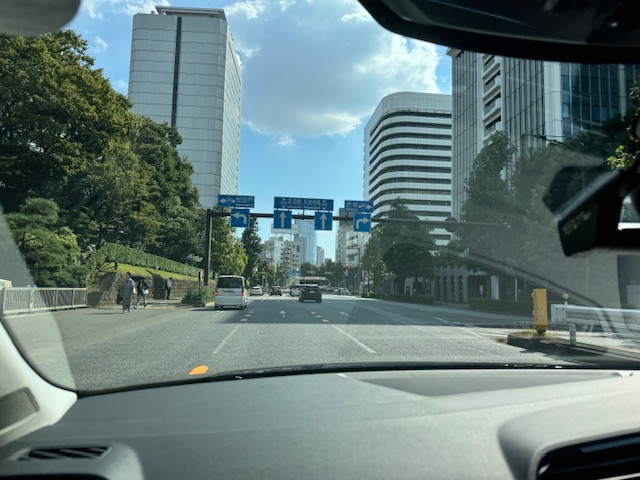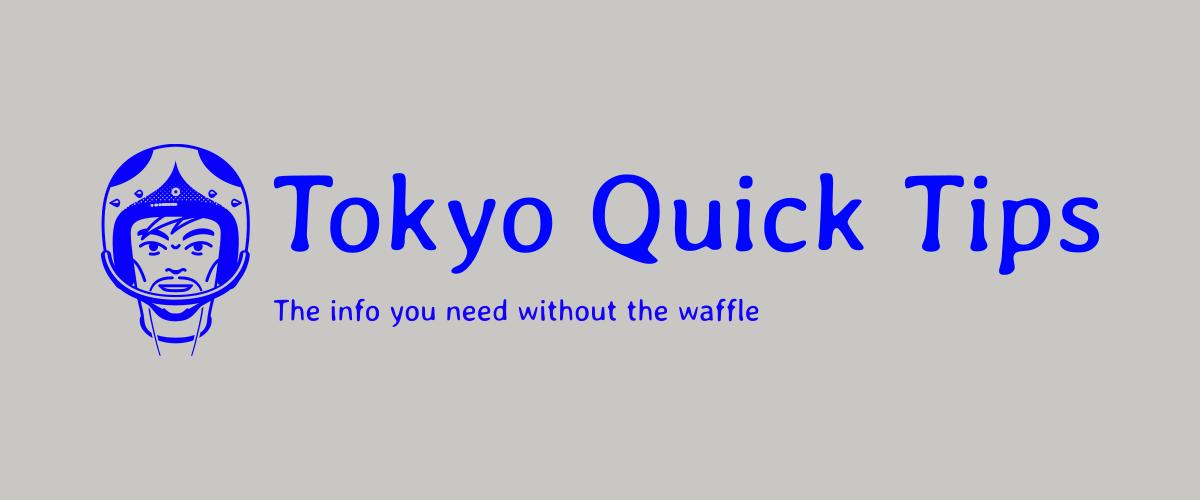While the streets and parking spaces in Tokyo may be more compact than those in your home country, driving in Tokyo is generally safe and enjoyable. Below is a quick overview of the key regulations and etiquette to help ensure you have a great driving experience during your stay.

What license do I need?- An IDP, a Japanese license, or (in some cases) just a translation. (MORE ON THIS)
How expensive is it to drive in Tokyo?- Competitive fuel and car rental prices, but parking can be expensive (MORE ON THIS)
Rules to be aware of – Drive on the left, zero tolerance for drink driving and non-hands free mobile phone use (MORE ON THIS)
How much English is available?– In general, you can get by without being able to read Japanese (MORE ON THIS)
Highway (Motorway) driving- Get an ETC card if you are staying in Japan for any length of time (MORE ON THIS)
Back to Quick Tips on Getting Around
A tip for a tip? Finding this site useful? It would be brilliant if you could consider making a donation, however small (or large) that would enable me to spend more time improving this site.
Fellow Bitcoiner?
If you are just visiting Japan, you will probably want to get an IDP (International Driving Permit). The IDP is typically valid for one year and must be obtained in your home country before arriving in Japan. When driving in Japan, you will need to carry this permit as well as the license from your home country. For a limited number of countries, you can get by with a translation of your home country license issued by the JAF (Japan Automobile Federation) or your country’s embassy in Japan. You can check out the requirements for your particular country at this site.
If you are staying longer in Japan, it can be impractical to keep renewing an IDP every year, so you will want to get a Japanese driver’s license. Holders of license from some countries have the option of transferring their license to a Japanese license. (see the JAF website for which countries allow this and the procedure.) If your country is not on the list, the only other option is to take the Japanese driver’s test. You would first need to take a written test (available in English from most centers) and then schedule a practical driving test. Although not mandatory, scheduling a few lessons at a driving school to familiarize yourself with what is required of you during the test may be advisable.
It is always tricky to try and compare apples with apples in these cases, but I will try to give a very general idea of the costs, compared to the U.S. and the U.K, based on current prices and the weak yen as of July 2024. Fuel in Japan (just over $1 per liter) is slightly more expensive than in the U.S., but cheaper than in the U.K. Car rental prices are roughly equivalent to the other countries. Car tax uses completely different criteria in each country so cannot really be compared, while on the whole car insurance is slightly cheaper in Japan.
As in all big cities, parking fees can get out of hand if you are not careful. Metered parking by the roadside tends to be cheaper, but is in high demand (and you have to pop back every hour to top it up so can be inconvenient.) Even coin-operated parking facilities in fashionable areas such as Ginza can be very expensive. Look out for the words “最大料金” which indicates the maximum you will be charged during that day, however long you leave the vehicle. In shopping districts, many people leave their vehicles in department store parking lots where you can get discounts based on how much you spend at the store.
In Tokyo (as in the rest of Japan) vehicles drive on the left side of the road. There is no equivalent of “right-turn on red” (left-turn in this case) as in the U.S. As solid red light always means stop. Speed limits are typically 40 km/h in urban areas and 100 km/h on highways, but these can vary, so always check local signs. Seat belts are mandatory for all passengers, and the use of mobile phones while driving is strictly prohibited unless a hands-free device is used. Drunk driving laws are stringent, with zero tolerance for any blood alcohol content. Parking can be challenging, and illegally parked cars are quickly ticketed or towed, so use designated parking areas.
There should be no real problem on this score. In central Tokyo and popular districts (such as Shibuya, Shinjuku, and Ginza), street signs often include Romanized versions of Japanese street names in addition to kanji (Japanese characters), and tourist areas and key intersections will also be in English. Some place names in the quieter areas may only be in Japanese, and it may be good to use a bilingual GPS system if you need to navigate these streets.
Most major road signs on highways and expressways include English translations. Directional signs, distance markers, and exit signs typically feature both Japanese and English.Many standard traffic signs (speed limits, no entry) are based on international symbols, making them easily recognizable even without English text. One sign that is generally not translated is the stop sign. It features the words “とまれ” in a white inverted triangle (point facing down) against a red background. It is very important you stop (not just slow down) when you see one of these.
It can be convenient to use the highways (motorways to us Brits) when driving in or out of Tokyo. If you are staying in Japan for any length of time and plan to use these types of roads, I would definitely recommend getting an ETC (Electronic Toll Collection) card. Not only does it save you time at the toll booth, but in many cases you will pay a lower fee, particularly during off-peak hours.
Many car rental companies will provide you with an ETC card when you hire the vehicle (it would be a good idea to ask). If you have a Japanese credit card, you can get ETC through the card company.
